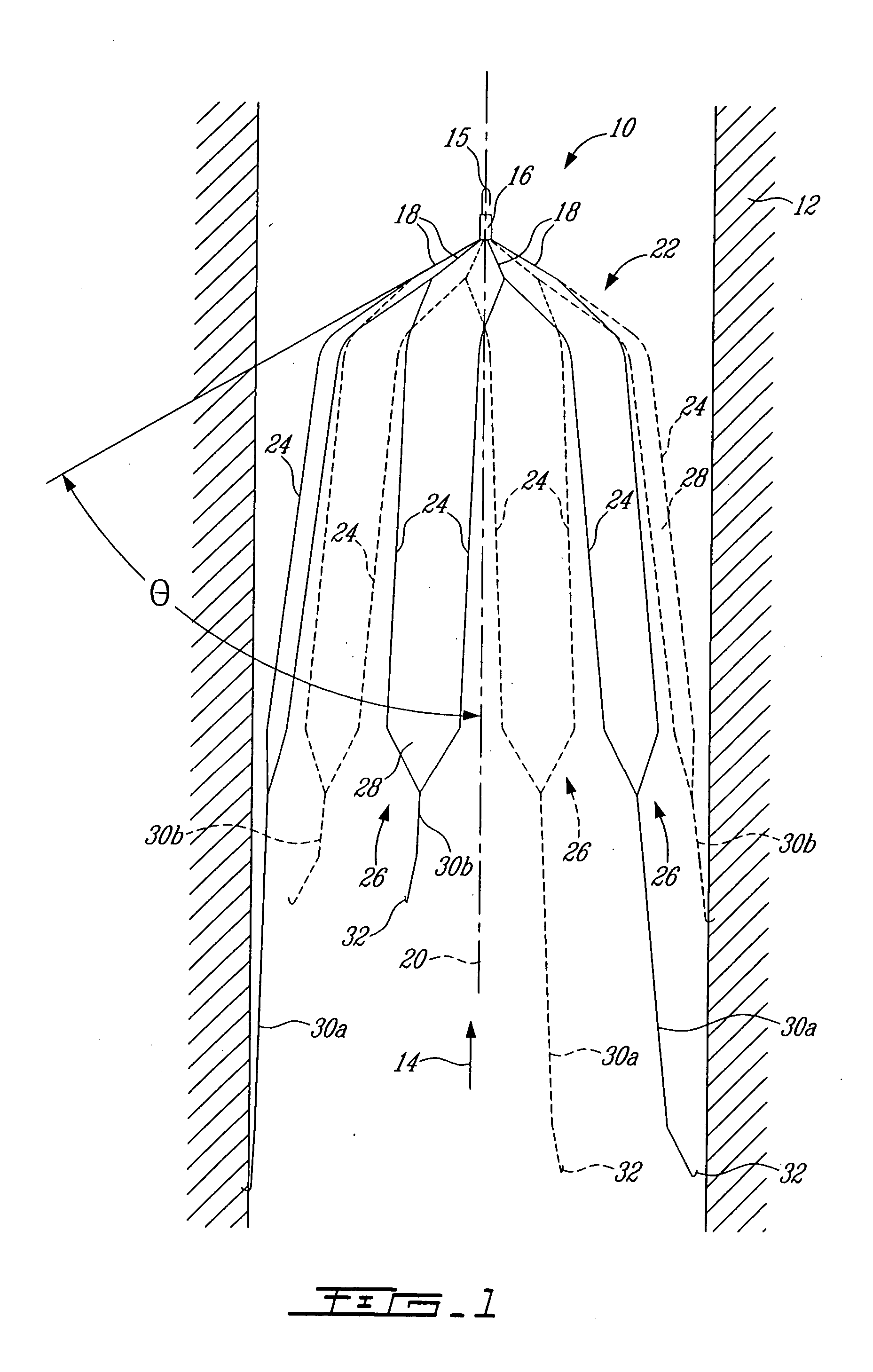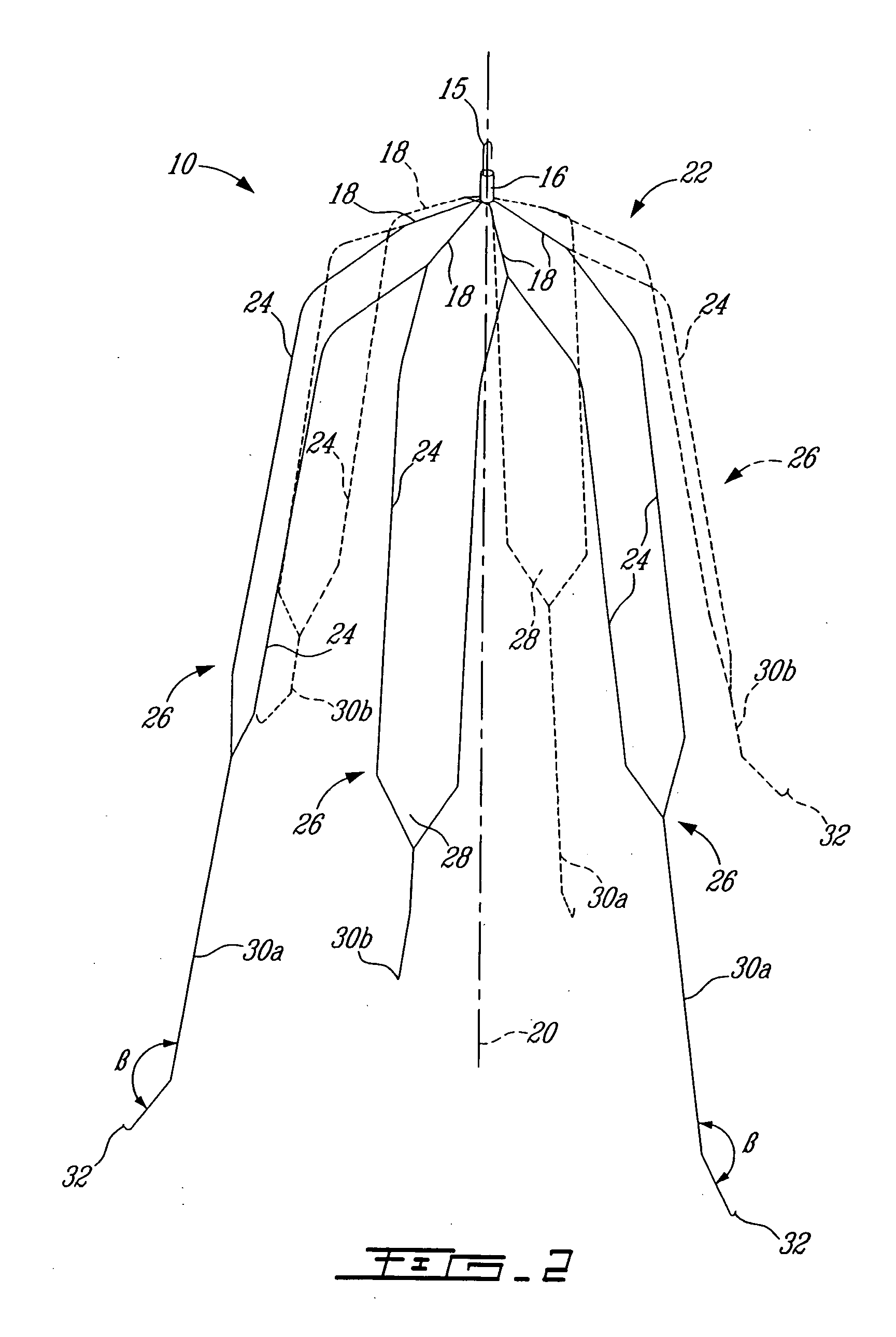Embolus blood clot filter
a filter and embolus technology, applied in the field of filters, can solve the problems of serious risks of injury to the blood vessel or inability to remove these filters, the filter is difficult to centrally position and maintain the axial alignment of the filter with the blood vessel, and the filter is difficult to remove. , to achieve the effect of convenient retrieval
- Summary
- Abstract
- Description
- Claims
- Application Information
AI Technical Summary
Benefits of technology
Problems solved by technology
Method used
Image
Examples
Embodiment Construction
[0021] Referring now to FIG. 1, a self-centering, self-expandable blood clot filter 10 is shown anchored at two longitudinally spaced-apart locations in a blood vessel 12 (e.g. the inferior vena cava) for filtering blood clots from a stream of blood flowing in the direction indicated by arrow 14. The filter 10 is preferably placed in the vessel 12 via a delivery catheter (e.g. a 6 French Catheter) inserted through a puncture in the vessel 12. When in the catheter, the filter 10 is in a radially contracted state. Upon release from the distal end of the catheter, the filter 10 radially expands to its deployed state for securely engaging the inner wall of the vessel 12, thereby ensuring centering of the filter 10 in the vessel 12, as shown in FIG. 1. The filter 10 is preferably made out of a shape memory material or a temperature responsive material. According to a preferred embodiment of the present invention, the filter 10 is formed of Nitinol, an alloy of titanium and nickel. In thi...
PUM
 Login to View More
Login to View More Abstract
Description
Claims
Application Information
 Login to View More
Login to View More - R&D
- Intellectual Property
- Life Sciences
- Materials
- Tech Scout
- Unparalleled Data Quality
- Higher Quality Content
- 60% Fewer Hallucinations
Browse by: Latest US Patents, China's latest patents, Technical Efficacy Thesaurus, Application Domain, Technology Topic, Popular Technical Reports.
© 2025 PatSnap. All rights reserved.Legal|Privacy policy|Modern Slavery Act Transparency Statement|Sitemap|About US| Contact US: help@patsnap.com



